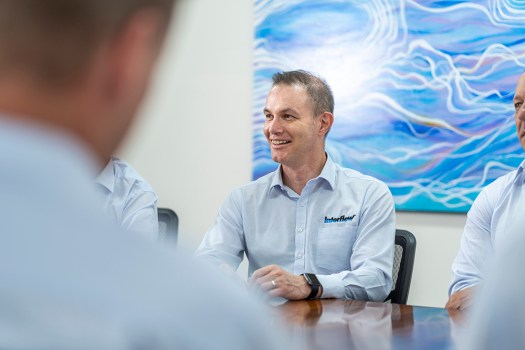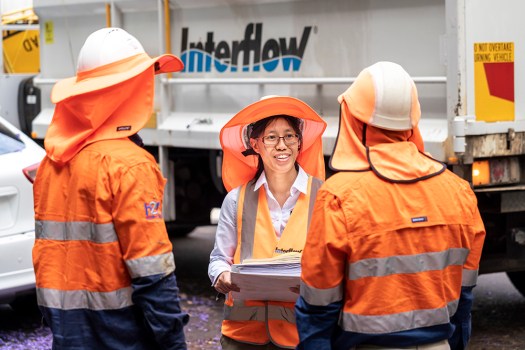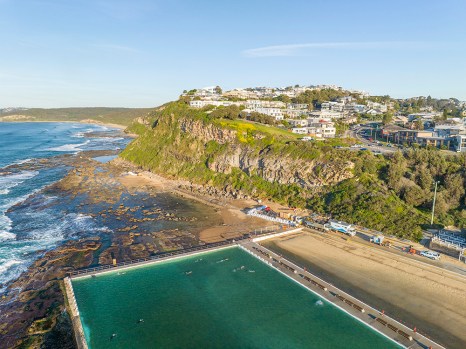
Having been in business for 86 years, Interflow has proven it knows a thing or two about longevity. Right now, that requires an all-encompassing sustainability strategy, as Richard McCarthy, Interflow’s Executive General Manager Southern Region, explains.
As one of the longest-serving private businesses in Australia, Interflow has always appreciated the necessity of shaping the business around the needs and expectations of current and future generations.
“As a business, we are constantly thinking about the needs of the next generation,” says McCarthy. “This business has proven it can ensure it will be around for many generations to come.”
Sometimes that forward-thinking has to do with innovation. Often it has to do with professionalism and skills. And it is always related to good commercial decision making. But today, there’s another vital ingredient in the recipe for business success – ESG, or environmental, social and governance – and for many team members, this is personal.
“I’ve got three kids, all at university age and older,” McCarthy says. “Your own kids make you realise it’s not just about your time here. It’s about what you’re leaving behind.”
It’s also “a beautiful engineering challenge”, McCarthy says, around how to do the work Interflow does in an economically and environmentally pragmatic way.

Interflow’s customers also have expectations of the contractors they bring on board. But Interflow doesn’t want that to be the driver of its core ESG priorities.
“We’re building an ESG strategy because it makes sense in every way as a business, and as a member of the community,” McCarthy says. “We’re doing it because it’s the right thing for us to do.”
Creating Interflow’s ESG strategy
“Our ESG strategy is looking at what we can add in next. What can we do well that will make a real difference to the business, to our customers and to our community?” McCarthy says.
“There are things you’d expect – there’s a clear focus on health and safety, on governance and innovation, and on sustainable growth, for example.”
“But then there are things around environment management, because so much of what we do is out in the environment and when we get it right, we’re building a better environment. And there’s a focus on community engagement because we are in people’s back gardens, we are in national parks, we are on roads, etc. So we’ve got to get that part right, too.”
Interflow’s partners are vital to the plan’s success

One important factor in creating the Interflow ESG strategy is that not everything is under Interflow’s control. In fact, 83 per cent of carbon emissions connected with Interflow’s work come from third-party purchases, from suppliers.
“It can be perceived that these are outside our control, but actually they’re not outside our influence,” McCarthy says.
“We have a number of core suppliers, so it actually becomes about how we work with them to influence what they do.”
“That’s one of the exciting things about the net-zero challenge – nobody can do it in isolation. It’s all about how we work with the organisations we work for, and the organisations that work with us.”
ESG is much more than net-zero
It’s always important to remember that net-zero is just one part of what ESG is all about, McCarthy says.
Another focus area of the ESG strategy is inclusion and diversity. This is driven by the overwhelming evidence around the phenomenal power and performance of a workforce that has diverse perspectives, backgrounds, experiences and ways of thinking.
“We’re creating an all-encompassing ESG framework for three reasons,” McCarthy says.
“One is that it’s so clearly aligned to Interflow’s purpose. So if we don’t do it, we’re not delivering on our purpose.”
“The second is that it just makes good business sense. Sustainability is going to save the business money, open up new opportunities and enhance our reputation.”
“Finally, it just feels right. When you work for organisations that are only about making profit, it just doesn’t feel right.”
We’re enhancing what we’re already doing

“One of the greatest realisations is how much Interflow is already doing in terms of sustainability,” McCarthy says.
“As soon as we put a framework in place that allowed us to measure our own performance, we recognised that we were doing quite well. The power then becomes about enhancing this across the business.”
Success is, to a large extent, about the little things people do daily. “We’re taking quite a methodical approach to our path to net zero,” McCarthy says.
“We don’t know exactly what it looks like yet, but we do know we’ve got to meet the ambition of our customers. And we know we want to do this as a coordinated unit.”
Interflow’s people expect nothing less
A clear ESG strategy is not negotiable for the Interflow team. People want to work for an organisation that aligns to their own values and beliefs, McCarthy says.
“What’s important is that we’re constantly developing our ESG strategy,” he says. “But it’s also important that we’re open and honest about what we can do and where we don’t yet have the answers.”
“Our people want their employer to work with purpose. Our community expects and requires our care and attention in everything we do. And as an organisation, we have powerful expectations around how we work. That’s why we’re putting so much effort into it, right now.”
Comment below to have your say on this story.
If you have a news story or tip-off, get in touch at editorial@governmentnews.com.au.
Sign up to the Government News newsletter
Sue Phillips on: 15 councils participate in SA emissions reduction trial
Garth Daddy on: War memorial contracts fudged, audit finds
Roger Buhlert on: New VLGA appointment vows to lift governance standards